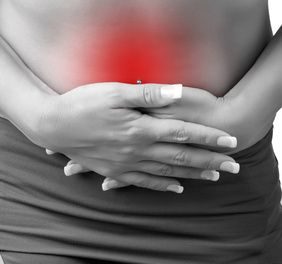The liver and gallbladder play a role in digestion. The liver produces bile, and the gallbladder stores it. Bile enables you to digest and absorb fats. The liver should produce between one and one-and-a-half quarts of bile per day. Sometimes there is not enough bile produced or the bile becomes thick and sluggish. This situation is known as “biliary stasis”. If biliary stasis is present, bile can back up and cause further damage to the liver.
When bile production decreases, the digestion and absorption of fats begin to decrease. Symptoms will begin to appear. These symptoms include itching, pain (under the right rib cage, right shoulder or between the shoulder blades), varicose veins and spider veins, dry or flaking skin, skin peeling at the heels, constipation, and even GERD (gastric reflux). Sometimes the stools will contain fat or be clay-colored. Biliary stasis can also cause nutrient deficiencies in essential fatty acids and oil-soluble vitamins (A, E, D, and K)
One just does not suddenly come down with biliary stasis. It has a gradual onset. It is caused by environmental toxins, chemical additives in food, poor eating habits (especially the consumption of sugar and refined foods), dyslipidemia (e.g. high cholesterol), and insulin insensitivity (pre-diabetes).
When things become severe enough, then medicine will recognize the “disease”. But small changes in liver and gallbladder function will gradually lower the amount of bile production. Symptoms will begin to appear and mystify doctors because the “disease” of biliary insufficiency or fatty liver has not appeared yet. Biliary stasis can progress to gall stones.
Some women experience cholestasis (sluggish bile) during pregnancy. Intrahepatic Cholestasis of Pregnancy (ICP) is a condition in which the normal flow of bile is affected by hormonal changes during pregnancy. Generally, the patient will experience severe itching. She may also have pain in the upper right quadrant of the abdomen. The condition is usually mild. Medical therapy includes a drug called ursodeoxycholic acid, and creams to control itching. The condition can become severe and threaten the fetus. When it is suspected, there should be regular liver function tests, tests for bile acids in the blood and fetal monitoring.
Symptoms of biliary stasis include:
- Nausea or digestive distress triggered by greasy food.
- Dry skin.
- Itchy skin.
- Clay-colored stools.
- Fat or grease in the stool.
- Gastric reflux that does not respond to other treatment.
- Constipation that does not respond to other treatment.
- Bitter or metallic taste in the mouth.
- Deficiency in essential fatty acids.
- Deficiencies in vitamins A, D, E, and K.
- Pain under the right rib cage.
- Biliary stasis is a possibility in pregnant women with itchy skin.
People with biliary stasis my experience pain over the eyes, pain when pressure is applied to the webbing between the right thumb and forefinger, and pain between the shoulder blades. Biliary stasis can progress to the formation of gallstones. Murphy’s sign, which is when pushing under the right rib cage causes pain (often severe in patients with gallstones), is a good indicator of problems with the liver or gallbladder.
One important cause of biliary stasis is fatty liver. Fatty liver can be caused by chemical exposure, alcohol consumption, metabolic syndrome, obesity, and there may be a genetic component. Generally, fatty liver is symptom-free, although some patients may experience fatigue and malaise. Symptoms (see above) begin to appear with the development of biliary stasis.
Biliary stasis is generally reversible but can proceed to actual liver damage and cirrhosis if ignored. Fatty liver, along with other challenges to the liver (chemical exposure, virus [hepatitis], and inflammation or scaring of the bile ducts) can eventually lead to biliary stasis. One of the early signs is intense itching.
Biliary stasis is very common in patients with insulin insensitivity. Approximately 30% of American adults are insulin insensitive and 25% have metabolic syndrome (also called syndrome X). The Journal of the American Medical Association states that if a person has three or more of the following symptoms then metabolic syndrome is present: waist measurement greater than 40” in men (35” in women); triglycerides greater than 150 mg/dl; HDL lower than 40 mg/dl; blood pressure greater than 135/85; or fasting glucose of 110 mg/dl. If you are overweight and have any of the symptoms listed earlier, you may have biliary stasis.





